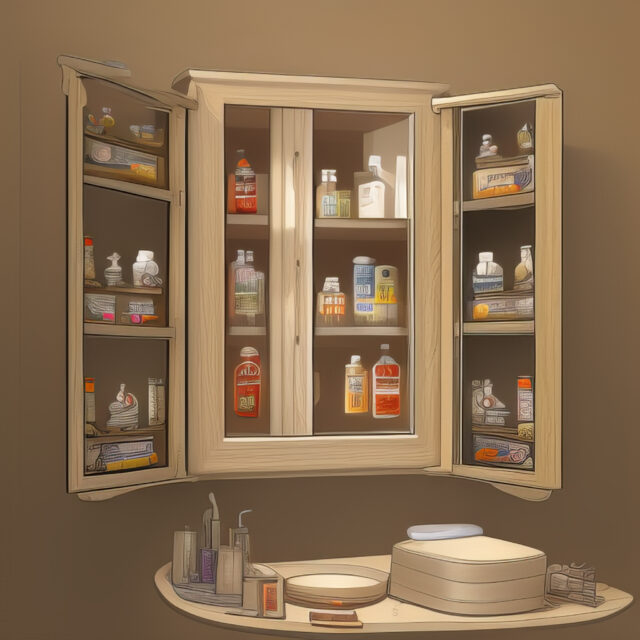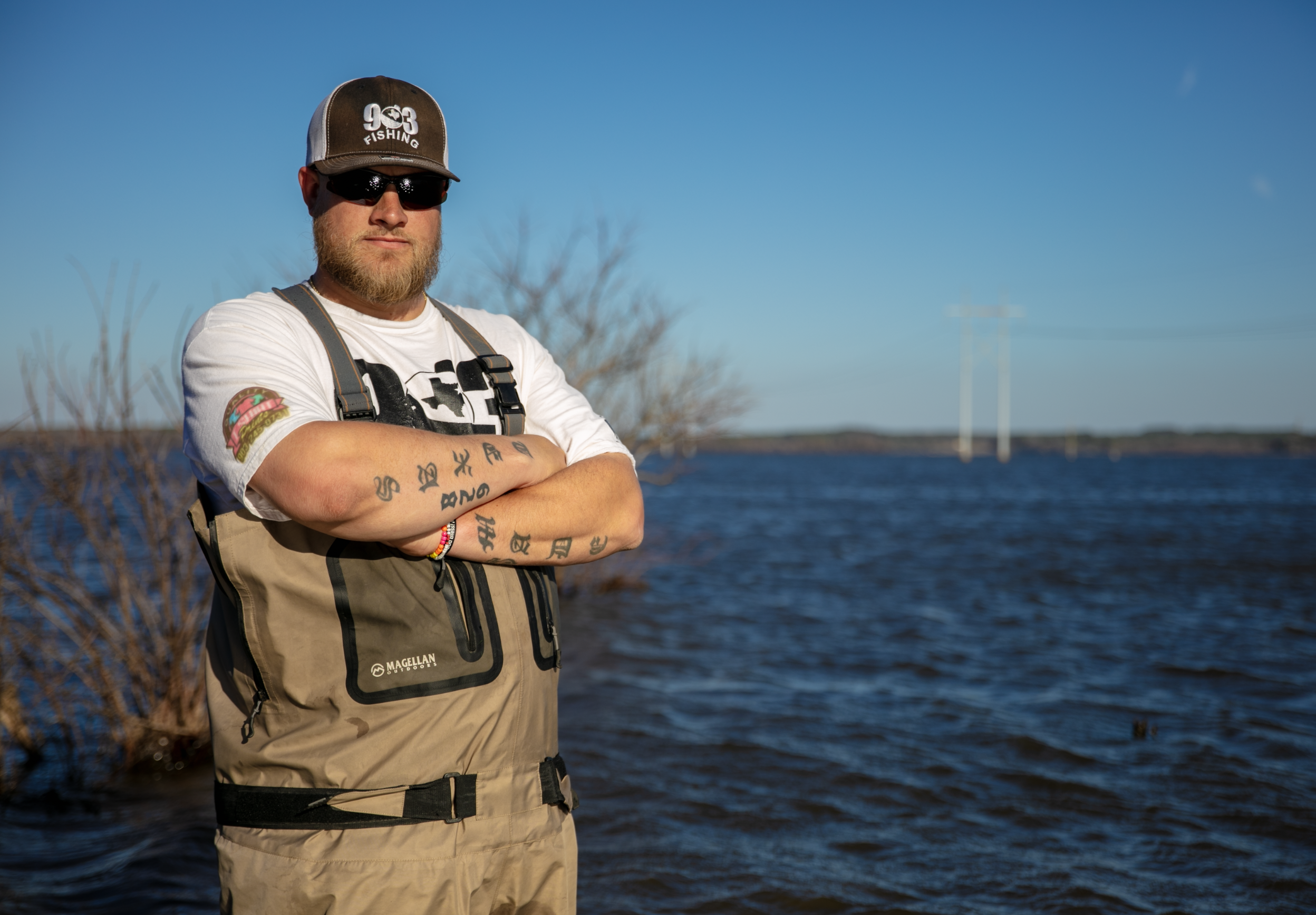by Kelly Reeves
The bathroom medicine cabinet was once one of the most important accessories in a home. It didn’t matter if it was a city home or a farm house, they all were equipped with a bathroom medicine cabinet, and every family’s cabinet housed the same basic important items.
Nowadays, very few homes have one. The few first aid and medical items that we own are usually found in the kitchen junk drawer that we all now have. Bandaids, Neosporin, and Tylenol mixed in with screwdrivers, a few rubber bands, an old lighter, loose batteries and everything else that has no designated area. How did we give up the bathroom medicine cabinet for a kitchen drawer full of junk; and what the heck is Neosporin anyway?
When I was growing up, I learned early on the importance of the bathroom medicine cabinet. Any time tragedy occurred, such as a skinned knee or a cut from a barbed wire fence, my Nanny or Mother said, “Let’s go to the bathroom.” That’s where all medical treatments occurred. The patient sat on the toilet seat while the treatment was administered. The mirror above the sink swung open to expose the hidden treasures of the medicine cabinet. Although I realized the importance of those contents, I feared most of them. Number one on the list was a product that was necessary to treat every cut, scrape, scratch, abrasion, laceration, or puncture … Monkey Blood! Well, that’s what we called it. Uppity folks called it Mercurochrome or Merthiolate. Regardless of what your family called it, we all used it. It was an antiseptic that had some numbing effects after the intense burning sensation finally ceased. It came in a little brown glass bottle with a screw on cap. The bottom of the cap held a glass tube that was used to paint the red tinted liquid from hell onto the wound. Monkey Blood left the wound stained an orange color for several days. Every grade school playground had numerous knees and elbows tattooed with orange splotches. If you had a nice mother, she would blow it after application. Hydrogen Peroxide was sometimes used to clean the wound before application of the Monkey Blood.
The top shelf of the medicine cabinet was reserved for the biggest bottles. Milk of Magnesia was always on the top shelf. It was the go to tonic for upset tummies, heartburn and constipation. It tasted like mint flavored chalk dust. You learned after a few doses to get it down quick like a shot of cheap whiskey. Right next to the Milk of Magnesia was the always dreaded Castor Oil. Castor oil was then used as a POWERFUL laxative when Milk of Magnesia wouldn’t do the trick. It is now used in industrial lubricants and as a component in biodiesel fuel, as well as an additive in hair care products, and lamp fuel. It is very thick and tastes like you are drinking a mouthful of Vaseline. Disgusting is not a strong enough description of the taste.
The next shelf was home to the band-aids, cotton balls, gauze, and the roll of the most brutal medical tape that ever existed. When the tape was removed, so was your skin leaving a patch of raw meat that now got a dose of Monkey Blood.
Everything in the medicine cabinet was not part of a torture kit. There was always a tiny bottle of Olive Oil used to treat earaches. It was truly soothing. Calamine Lotion was a soothing staple used to treat poison ivy, poison oak, chicken pox, mosquito bites and chiggers. It left a flaky pink film on your skin when it dried. Iodine for cleaning injuries and Aspirin for pain was always in supply. Aspirin was taken orally and was sometimes crushed into powder was put on an open wound before bandaging. A blue bottle of Vicks Salve was the preferred treatment for head colds, chest colds, flu, sore throat and congestion. My Nanny would rub your chest with Vicks Salve before bed and place a warm wet rag on top of the salve. She would then get a big glob on her finger, wipe it in your mouth, and hold your mouth shut until you swallowed it. Even as a kid I knew that it clearly stated on the bottle, “Do not take internally.” It would however, open a stuffy nose and sooth a sore throat, if you survived the treatment. Some folks believe in rubbing their feet with Vicks before bed to combat cold symptoms.
Mentholatum was also an ointment used for treatment of chest pain, coughs, colds, migraine headaches, muscle or back pain, constipation, or chapped lips. Any child who had a stuffy nose got a glob of Mentholatum poked into each nostril before bedtime.
Campho Phenique, in the little green bottle, was commonly used to treat insect bites or skin irritations, chapped lips and cold sores.
Paregoric was a staple of every medicine cabinet in America. Paregoric was an over-the-counter narcotic containing opiates and morphine. It was used to treat colic in babies, diarrhea, and other stomach ailments. It was also used for soothing teething babies by rubbing the liquid narcotic on their tender gums. Paregoric had a repulsively strong licorice taste. Mother used an oversized spoon and put sugar in the spoon and poured Paregoric over the sugar. The sugar helped the taste a tad, but it was still sickening. If you were able to swallow the narcotic potion, you soon forgot about the repulsive taste and drifted off into a sweet drug induced slumber. It is no longer available over the counter, if at all.
The bottom shelf of the medicine cabinet housed the mercury thermometer, tweezers, and enema bottle that sat between the V05 and Oil of Olay. The thermometer was used by everyone in the household. Some got it under the tongue, some got it under the arm pit. Everyone shared the germs. The enema bottle was the most feared item of all. The kids all quickly learned that when Nanny asked, “Have you had a bowel movement today?”, the answer better be, “Yes ma’am. Like a pack mule.” If you answered “No”, you soon were on the receiving end of a soapy warm-water enema.
As a teen, my Ol’ Man often took over the job of medical treatments. He had his own medicine cabinet put together in an old tackle box. It contained most of the usual items of the home medicine cabinet plus a veterinary grade staple gun, side cutters, needle-nose pliers, and electrical tape. If I went to him with a minor injury, he would say, “ Good grief. I’ve had worse cuts on my ear drum.” If he felt the injury was worthy of treatment, he would soak the injured area in alcohol before wrapping it in a homemade bandage. Wounds that didn’t need to be wrapped were treated with veterinary Cut Heal wound care liquid just like the hounds were. Stings or bites were treated with a poultice of used snuff. Muscle aches, strains and sprains were rubbed with horse liniment. His treatments were much less brutal than the treatments from the women, though how effective they were is debatable.
No system could be more perfect than to keep all of these medical miracles together in one location, and the same location at every home. Every home had a medicine cabinet and all were similarly stocked. We’ve now “progressed” to a junk drawer with Neosporin and a few Bugs Bunny bandaids that barely stick to the skin. Medical science and treatments are constantly advancing, but are they really getting better? I hate that my children have missed out on most of these character building medical treatments. Many generations of kids were kept alive and healthy by the simple, cheap and effective remedies found in the bathroom medicine cabinet, long before Web MD and emergency clinics. Maybe progress isn’t all it’s cracked up to be.












